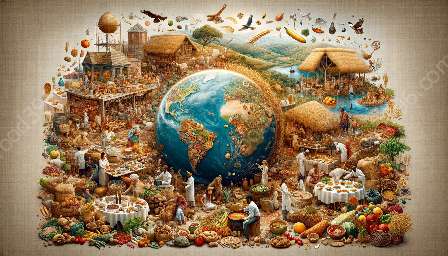Traditional meat preservation methods have been a fundamental part of food cultures across the world for centuries. These methods, such as curing, smoking, and drying, were developed as a way of extending the shelf life of meat before the advent of refrigeration. The preservation process not only allows meat to be stored for longer periods but also enhances its flavor and texture, adding a unique element to traditional food recipes and cooking methods.
Understanding Traditional Meat Preservation Methods
Traditional preservation methods are deeply rooted in cultural and culinary traditions. They vary from region to region, reflecting the specific environmental conditions, available resources, and local tastes. Each method involves a series of steps that transform the meat, making it suitable for storage and consumption over an extended period.
Curing
Curing is one of the oldest and most widespread methods of preserving meat. It involves the use of salt, nitrates, or sugar to draw out moisture from the meat, creating an inhospitable environment for bacteria and other spoilage microorganisms. This process can also involve the use of spices and herbs to impart additional flavors. Common cured meats include bacon, ham, and salami, each with its unique blend of seasonings and curing techniques.
Smoking
Smoking meat as a preservation method not only imparts a rich, smoky flavor but also acts as a natural antimicrobial agent. The smoke generated from burning wood contains compounds that inhibit bacterial growth, further extending the shelf life of the meat. Different woods impart distinct flavors, and the smoking process enhances the complexity of traditional recipes, such as smoked sausages and smoked brisket.
Drying
Drying, or dehydration, is another traditional preservation method commonly used in regions with warm and dry climates. The process involves removing moisture from the meat through exposure to air, sunlight, or heat, creating an environment where pathogens cannot thrive. Dried meats, such as beef jerky and biltong, are concentrated in flavor and nutrients, making them ideal ingredients in traditional stews and soups.
Integration with Traditional Food Recipes and Cooking Methods
The preserved meats resulting from traditional preservation methods form the foundation of many traditional food recipes and cooking methods. The unique flavors and textures achieved through curing, smoking, and drying enhance the culinary experience, lending depth and character to a diverse range of traditional dishes.
For example, in Italy, cured meats such as prosciutto and pancetta are essential ingredients in classic recipes like carbonara and risotto, contributing distinctive savory notes and depth of flavor. Similarly, smoked meats serve as central components in traditional barbecue recipes in regions across the United States, bringing forth nuanced smoky aromas and tender textures.
Furthermore, dried meats are integral to traditional African and South American cuisines, where they are rehydrated and incorporated into hearty stews and casseroles. The reconstitution of dried meats adds a rich, meaty depth to these dishes, capturing the essence of traditional food systems and culinary customs.
Connection to Traditional Food Systems
Traditional meat preservation methods are closely interwoven with traditional food systems, reflecting the resourcefulness and ingenuity of communities in utilizing local surroundings to sustain themselves. These preservation techniques are often deeply embedded in cultural rituals and celebrations, serving as a means of preserving heritage and passing down ancestral culinary knowledge.
They also contribute to sustainable food practices, as they allow communities to store and utilize excess meat from hunting or farming seasons, reducing waste and ensuring a consistent food supply throughout the year. By integrating with traditional food systems, these preservation methods support the continuity of traditional culinary practices, preserving the authenticity and uniqueness of regional cuisines.
In conclusion, traditional meat preservation methods not only play a crucial role in extending the shelf life of meat but also significantly impact traditional food recipes, cooking methods, and broader food systems. The preservation techniques, combined with cultural significance and regional variations, create a fascinating narrative of culinary heritage and tradition around the world.

